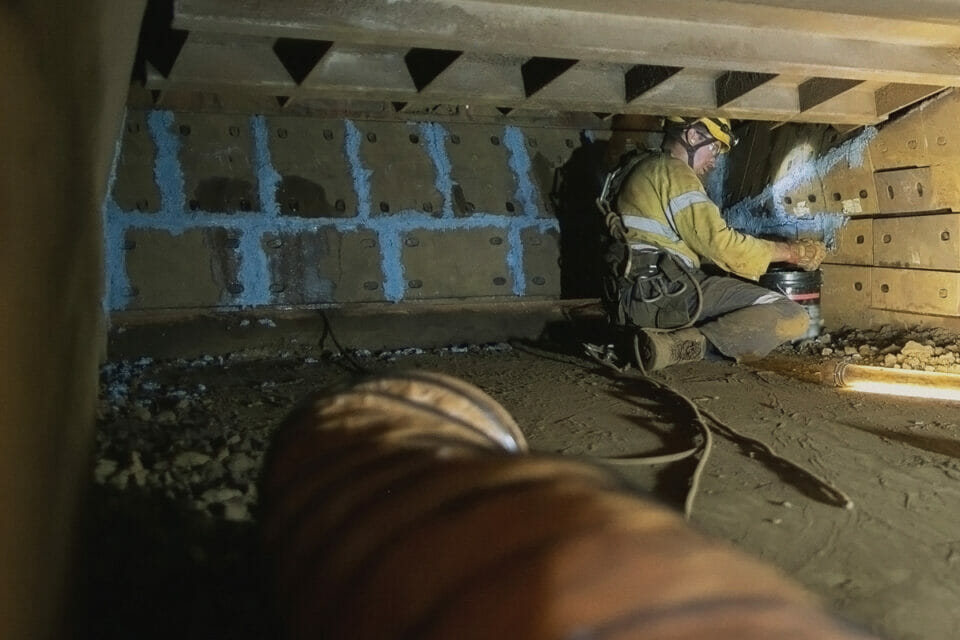
The H2S Training Standard: What Safety Professionals Must Know | Risk Matrix Episode 116
THE RISK MATRIX Cutting-edge podcast on occupational safety and risk management. Hosted by industry titans: JAMES JUNKIN, MS, CSP, MSP,…
Methane gas is one of many confined space hazards and companies need to be aware of dangers and ensure they reduce risks and protect workers.

Methane gas, which is commonly used in various industries like oil and gas, agriculture, and utilities, poses significant dangers when present in confined spaces. Methane gas creates confined space hazards because of its highly flammable and explosive nature, and ability to displace oxygen. It’s odorless, colorless, and tasteless, making it very difficult to detect – until it’s too late. It can also travel long distances, finding its way into all sorts of small, confined spaces. While it’s not necessarily a toxic gas, it presents a variety of dangers to workers.
In this article, learn about seven reasons why methane gas is dangerous in confined spaces and discover preventive measures to mitigate these confined space hazards, and protect your workers.
The odorless and colorless nature of methane gas greatly increases its confined space hazard potential. Without specialized equipment, detecting methane gas becomes challenging, making it even more dangerous for workers. In the mining industry, The National Institute for Occupational Safety and Health states “The use of machine-mounted methane monitors is required by federal regulations to alert miners to the presence of potentially dangerous concentrations of methane while mining coal”.
Along with hydrogen, propane, and iso-butane, methane gas is highly combustible, making it a potentially catastrophic confined space hazard. The accumulation of methane gas in confined spaces can lead to deadly explosions with minimal ignition energy required.
With its high flammability, methane gas is a confined space hazard that can easily catch fire. All it takes is a flame or one small spark from a tool, posing a significant risk to the safety of those working in the area.
While low concentrations of methane gas are generally not harmful, they can accumulate in hazardous amounts in confined spaces. This can result in oxygen displacement. This confined space hazard can lead to severe health consequences, including suffocation and potentially fatal outcomes. Early signs of displaced oxygen include rapid breathing, rapid heart rate, general clumsiness (while working with potentially dangerous tools), emotional upsets, and fatigue. If not given emergency intervention, symptoms become progressively worse and can lead to death.
When methane gas moves from a larger space to a confined space, it goes from a lower concentration to a higher concentration. Methane gas quickly diffuses through the air, rapidly filling up confined spaces. Without proper ventilation, this rapid diffusion increases the risk of explosions, fires, sudden oxygen displacement, and other confined space hazards.
Exposure to methane gas can result in a range of health effects, including headaches, dizziness, nausea, unconsciousness, and even death. In areas, such as confined spaces, where oxygen deficiency is a risk, or where equipment failure may cause a high concentration of methane, respiratory protection protocols should be in place.
Confined spaces inherently have limited escape routes, making quick and safe evacuation challenging in the event of an incident. The presence of methane gas compounds this confined space hazard, increasing the urgency and risk associated with evacuation.
The hazards of methane gas in confined spaces cannot be overstated. Its highly flammable and explosive nature, along with its ability to displace oxygen, increase other confined space hazards, and pose a significant threat to human health and safety. To mitigate these confined space hazards, it’s crucial to implement precautionary measures such as conducting regular atmospheric testing, ensuring proper ventilation, and employing suitable personal and respiratory protective equipment. By prioritizing safety protocols, regular training, and raising awareness of confined space hazards, you can prevent methane gas-related incidents and safeguard the well-being of your workers.


THE RISK MATRIX Cutting-edge podcast on occupational safety and risk management. Hosted by industry titans: JAMES JUNKIN, MS, CSP, MSP,…

THE RISK MATRIX Cutting-edge podcast on occupational safety and risk management. Hosted by industry titans: JAMES JUNKIN, MS, CSP, MSP,…
We’ll send you practical and insightful supply chain risk management info that can benefit your business. Plus, important company updates that keep you in the loop.
